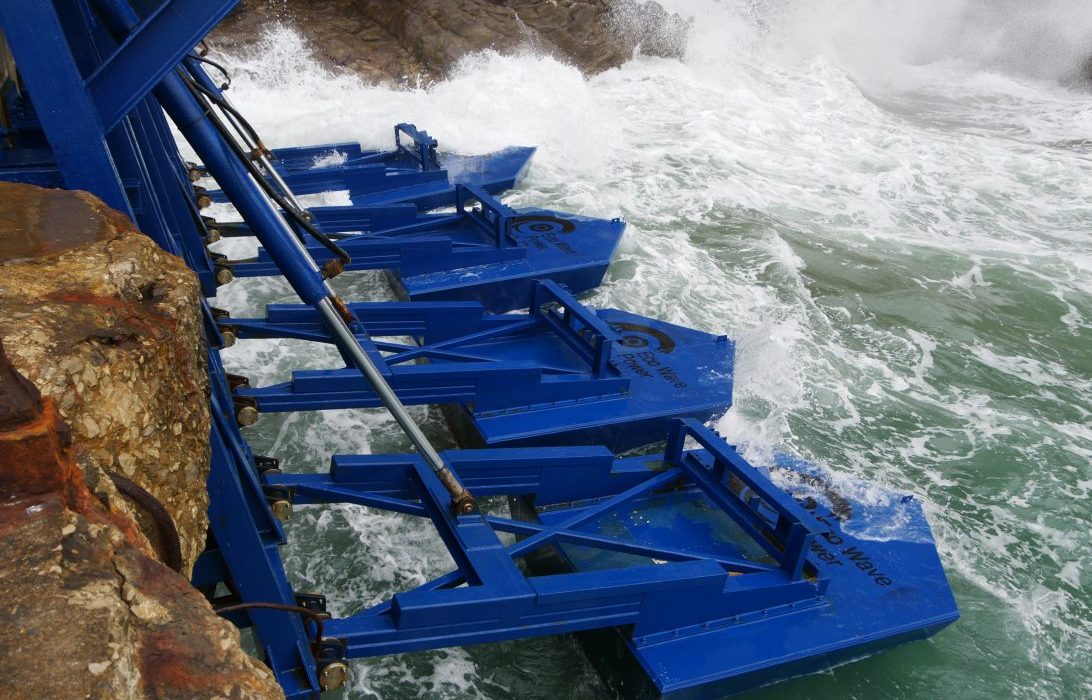As California steers toward a future powered by renewable energy, the rhythmic undulation of the Pacific Ocean beckons as a potential source of sustainable power. In a groundbreaking move, Governor Gavin Newsom, in October, signed a law directing state agencies to explore the feasibility of transforming ocean waves and tides into a formidable force for electricity generation. Against the backdrop of nearly 600 square miles of ocean off California being leased for floating wind farms, this article embarks on an exploration of the burgeoning domain of blue power – the harnessing of oceanic movements to meet the state’s escalating energy demands.
While the allure of renewable energy has spurred significant investment in wind and solar initiatives, the vast potential of wave-generated energy remains largely untapped. As California endeavors to achieve its ambitious target of transitioning to a fully renewable electric grid by 2045, the article delves into the challenges hindering the progress of ocean energy projects from experimental phases to robust, commercially viable contributors to the grid. In the following sections, we unravel the legislative initiatives steering this paradigm shift, the technological advancements driving the industry, and the projects already underway off California’s coastline, offering a glimpse into the future of blue power and its role in shaping California’s energy landscape.
The Current Landscape: Challenges in Ocean Energy Development
Unlocking the vast potential of wave-generated energy stands as a promising but intricate endeavor, fraught with challenges on the path from experimental ventures to commercially viable power sources. In the expansive realm of the Pacific Ocean, already a bustling hub of diverse maritime activities, the prospect of integrating ocean energy faces multifaceted hurdles. The imminent introduction of floating wind farms off California’s coast adds to the complexity of an industry striving for transformation.
Technological Development: One major impediment lies in the continuous evolution of the technology essential for harnessing wave energy efficiently. While strides have been made, the industry grapples with refining and advancing the mechanisms that convert oceanic motion into reliable electricity. The dynamic nature of waves demands resilient, enduring technologies capable of withstanding the relentless forces of the sea.
Cost-Effectiveness: A significant barrier on the journey to mainstream adoption is the high cost associated with ocean energy production. As with any pioneering technology, the initial investment and operational expenses remain substantial. Achieving cost-effectiveness is pivotal for attracting widespread investment and ensuring the economic viability of large-scale projects.
Harsh Marine Environments: The very essence of ocean energy extraction involves navigating the harsh realities of marine environments. Working amidst unpredictable waves, corrosive saltwater, and the relentless forces of nature poses a formidable challenge. Developing infrastructure capable of enduring such conditions while maintaining efficiency is a critical aspect of the industry’s struggle.
In exploring the current landscape, it becomes evident that while the potential for wave-generated energy is immense, surmounting these challenges demands concerted efforts in technological innovation, cost reduction, and engineering solutions tailored to the demanding marine environment.
Legislative Initiatives: Navigating the Path to Blue Power
As California charts a course toward a future driven by renewable energy, the rhythmic undulation of the Pacific Ocean emerges as a promising reservoir of sustainable power. In an unprecedented move, Governor Gavin Newsom, in October, inked a law instructing state agencies to scrutinize the potential of converting ocean waves and tides into a potent source of electricity. With nearly 600 square miles of ocean leased for floating wind farms, this article embarks on a voyage through the burgeoning realm of blue power – the utilization of oceanic movements to satiate California’s escalating energy needs.
While renewable energy investments have soared in wind and solar initiatives, the vast potential of wave-generated energy remains largely untapped. As California strives to realize its ambitious goal of a fully renewable electric grid by 2045, this article scrutinizes the challenges impeding the evolution of ocean energy projects from experimental stages to robust contributors to the grid. The legislative initiatives propelling this transformative shift, the technological strides propelling the industry forward, and the ongoing projects along California’s coastline, providing a glimpse into the future of blue power and its pivotal role in shaping the state’s energy landscape.
Advances in Wave and Tidal Energy
The article delves into the mechanics of wave and tidal energy generation, emphasizing the kinetic motion harnessed from ocean movements. While there have been technological advancements, the cost of producing wave and tidal power remains high, presenting a significant hurdle. Insight from Tim Ramsey, Marine Energy Program Manager at the U.S. Department of Energy’s Water Power Technologies Office, sheds light on the industry’s current state and future trajectory.
Wave Energy Ventures Off California’s Coast
Despite the challenges, California is already hosting wave energy projects, with small demonstration projects launched off the West Coast. The article explores these initiatives, including a project at AltaSea, a public-private research center supporting marine scientists, and the potential commercial deployment of Eco Wave Power’s technology. Insight is provided by industry experts, highlighting the progress made and the hurdles yet to overcome.
The Future Outlook: Blue Power’s Role in California’s Energy Mosaic
The final section delves into the future outlook for blue power, considering its potential contribution to California’s clean energy goals and the nation’s energy needs. As the industry undergoes testing and development, it shows the versatile applications of wave and tidal energy, including charging oceangoing vessels, supporting remote communities, and facilitating desalination plants. The unknowns and challenges are discussed, emphasizing the need for continued research and development to unlock the enormous potential of blue power.

